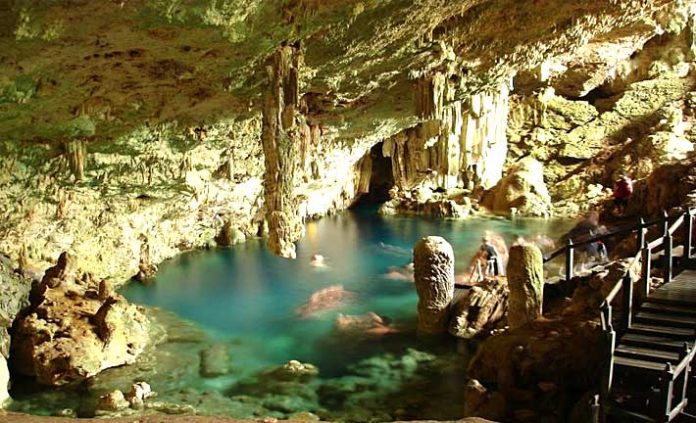An interesting trip to Cuba can be related to its cave system, attractive for cavers, professionals, amateurs, or simply for adventurous tourists.
This course can encompass the world of caves and underground rivers that have particular charms on the northwestern coast of the archipelago.
Some scientific theories say the first inhabitants of the island arrived in these areas, thousands of years ago, serving as refuge in the midst of a landscape of unique attraction, as well as being a temporary home for French pirates and corsairs in the 16th and 17th centuries.
Cuba is considered by speleologists as having a 60 percent karst surface (tropical karst). The largest of the Antilles has 26 thousand caves and many of them are interesting natural museums in themselves.
For example, in the western province of Matanzas, including the famous resort of Varadero -some 140 kilometers to the east of Havana, the capital-, sea penetrations of up to four kilometers appear on its north coast.
This feature enriches the 350 caves in the area, of which -with strict care for the environment- about 20 can be used for tourism.
For this reason, the proposed tour, very adventurous by the way, leads us to mention some where the memory is engraved forever, by the figures painted in its interiors.
A Chinese slave named Justo Ho plunged his pike into the ground and an almost indescribable hole appeared before him.
It was April 17, 1861 and the excavation was carried out on the land of Don Manuel Santos Parga, who quickly appraised the newly discovered treasure and began to adapt it for visitors.
Over time it would be the Cueva de Bellamar -at the outskirts of the city of Matanzas- of whose three kilometers’ extension, only 500 meters are visible to the public, illuminated.
In the place, with guide services and temperature of 28 degrees Celsius and 98 percent relative humidity, Bellamar brings to view its exclusive, crystalline formations of Stalactites (they grow from top to bottom), Stalagmites (from bottom to top) and Elictites (horizontally).
They are accumulations of water, calcium and magnesium carbonate, guided by the whims of nature.
They form figures and rooms, the legends and structures indicate their names: Gothic rooms, the Temple, the Striped Coconut, the Tiger’s Throat, the Fountains of Youth, Love or Divorce, and the Bath of the American.
In Varadero, almost reaching Punta de Morlas, is the Ambrosio Cave, whose name is a classification provided in 1967 by Cuban researcher Antonio Núñez Jiménez (1923-1998), (Ambrosio Type).
It has 150 meters in a series of galleries where you can see unique aboriginal pictographs.
Another example is the Saturno (or Cepero) cave, which is on the way to the Juan Gualberto Gómez international airport, on that same beach (Canimar-Camarioca road). It has very clean waters in 25 meters, and allows underwater caving.
All these proposals have already been visited by both Cuban and foreign travelers (before Covid-19), on excursions, especially to take photographs, places that will return to the fore with the recovery of tourism in the island.
ef/mem/rfc









